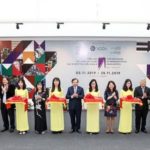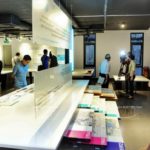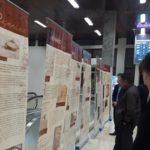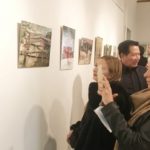 |
| An image representing 1971 genocide displayed in the United Nations Headquarters in New York. (Photo/ANI). Image Credit: ANI |
The exhibition featured photographs and stories about the genocide perpetrated by the Pakistan Army during the Liberation War of Bangladesh in 1971. It also included items from the Liberation War Museum, such as a 1971 map of Bangladesh, an original telegraphic message from the President of Pakistan announcing the launch of Operation Searchlight, and a copy of the Proclamation of Independence. Additionally, the exhibition showcased audio-visual presentations, photographs, and stories collected from the victims and survivors of the genocide.
The 3-day long exhibition at the United Nations Headquarters in New York was part of a series of events commemorating the 1971 genocide in Bangladesh. It provided an opportunity to remember the millions of victims of the genocide, as well as to raise awareness of the atrocities that were committed. The exhibition was attended by many dignitaries, including the Ambassadors, UN officials, and members of the Bangladesh community, who paid tribute to the victims and survivors of the genocide. Moreover, it served as a reminder of the importance of preserving the history and memory of the genocide, and the need for justice and accountability.
He said the display was a tribute to the three million martyrs and two hundred thousand women who suffered during the war.
“Under the able leadership of Honorable Prime Minister Sheikh Hasina, this is a historic step in our efforts to garner international recognition of the horrendous genocide that was committed by the occupation army and their collaborators against our people in 1971,” declared Foreign Secretary Momen. He went on to thank the Liberation War Museum for their assistance in organizing the display. Ambassador Muhammad A Muhith expressed his gratitude to the ambassadors and the representatives of media and civil society for attending the event. He said the display was a solemn tribute to the three million martyrs and two hundred thousand women who suffered during the war.
“We need to make more efforts to share the stories of our great liberation war and the genocide with international audiences,” said Ambassador Muhith. The exhibition, which will remain open to the public until 31st March 2023, displays 27 photos of the 1971 genocide alongside accompanying historical narratives, courtesy of the Liberation War Museum from its collection. This will not only help us secure the much-needed recognition of the 1971 genocide but will also help to raise awareness on the need to prevent genocide and other atrocity crimes. (ANI)
A Glimpse of Hanoi’s Old Quarter
Recently, the Management Board of Hanoi’s Old Quarter cooperated with the city of Toulouse to open an exhibition named “Ke cho – Pho co” (City Dwellers – Old Quarter) at Hanoi’s Old Quarter Cultural Exchange Centre to depict the formation and development of Hanoi’s Old Quarter in the past 1000 years.
Exhibition features Vietnam’s lands and people through lens of Hungarian photographer
NDO – A photo exhibition entitled ‘Vietnam’s heartbeats’ opened in Budapest, Hungary, on January 10 as the first event in 2020 to celebrate the 70th anniversary of Vietnam – Hungary diplomatic relations (1950 – 2020).








